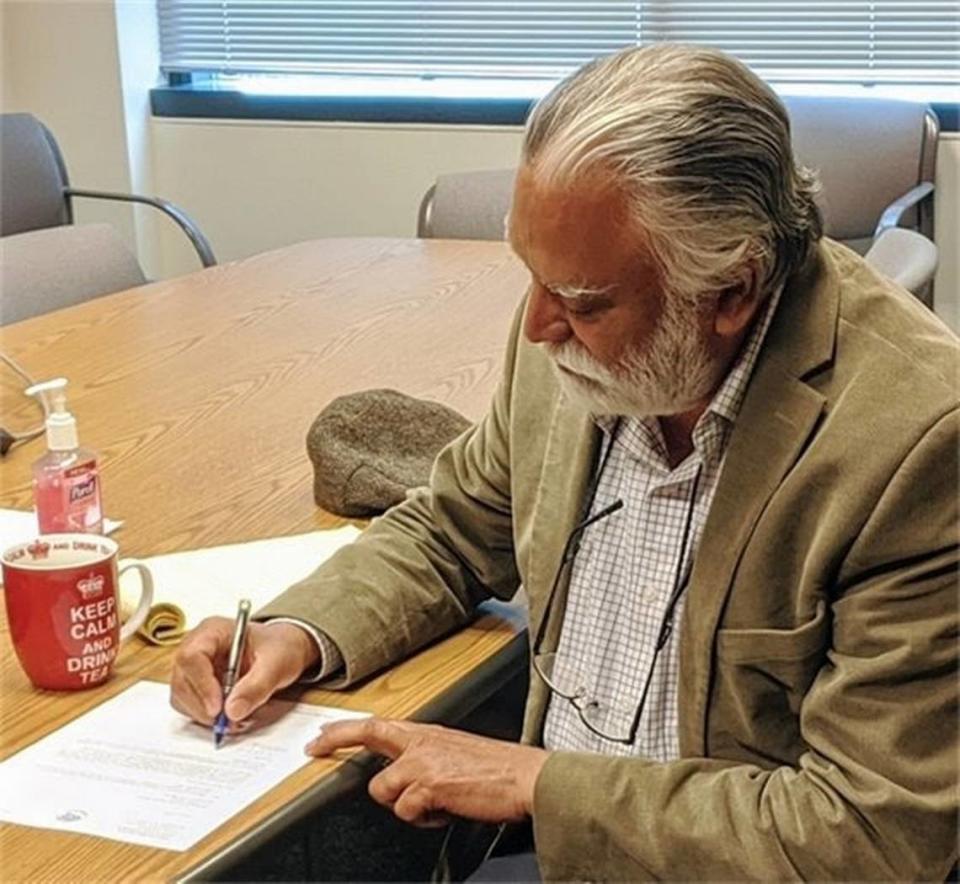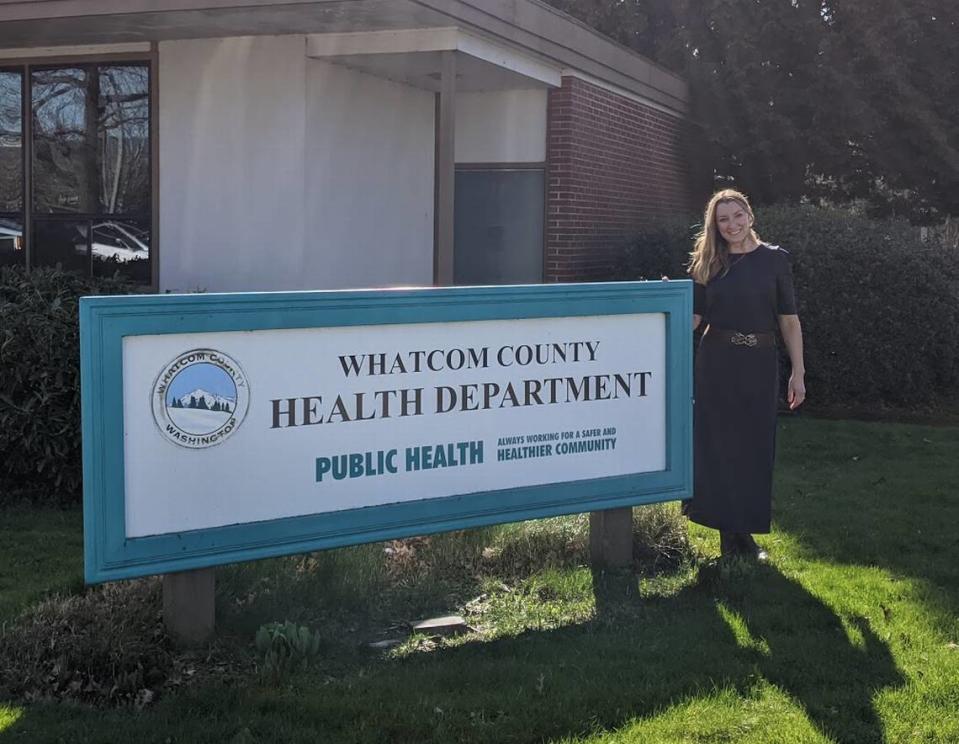Whatcom COVID report praises health response; officials’ secrecy and leaks criticized
Whatcom County’s response to the COVID-19 pandemic earned good marks for swift action to save lives, according to a preliminary version of a report commissioned to examine how local officials performed in a major crisis, the first global health threat in a century.
But Whatcom Unified Command, the multi-governmental agency that handled the emergency response, was criticized for logistical inefficiencies and a lack of transparency and responsiveness to the public.
Part of that friction was linked to a lack of training in emergency management among some county employees, differences in organizational structure and an internal power struggle between the Health Department and Whatcom Unified Command early in the pandemic, according to the 56-page report prepared by Berk Consulting in collaboration with Eric Holdeman and Associates.
The County Council budgeted $100,000 for the report in September 2021.
Nevertheless, the report cites successes such as a COVID-19 mortality rate that was among the lowest in Washington state; a collaborative effort on U.S.-Canada trade; addressing homelessness; helping local businesses affected by closures and stay-home orders; and a program to collect and distribute donations from the public.
The report also notes that several key elected officials had barely been sworn into office when the pandemic hit — including County Executive Satpal Sidhu, County Council members Ben Elenbaas and Kathy Kershner, and Bellingham Mayor Seth Fleetwood, who were all elected in November 2019.

Health Department Director Erika Lautenbach was hired in March 2020, just a week after the first case of COVID-19 was reported locally.
“Despite the challenges that were thrown your way, the county had a very effective response,” said Brian Murphy of Berk Consulting.
Representatives of Berk and Holdeman presented their findings to the County Council’s Public Works and Health Committee on Tuesday, June 21.
Whatcom County officials also received praise for early use of general fund money before federal aid was approved; for quickly pivoting to a work-from-home format for employees; and for holding meetings online so that elected and appointed leaders could continue to conduct public business.
Former Whatcom County Councilman Rud Browne, who last year sought an independent assessment of the county’s pandemic response, spoke as a private citizen to the committee on Tuesday.
“For the record, I’m very proud of the way that county employees, the Health Department and the citizens of the community stepped up during the COVID crisis,” said Browne, who didn’t seek re-election in November 2021 after serving two four-year terms on the County Council.
“It was a moment of real pride for me to live in this community to see how people came together,” Browne said.

Pushback at secrecy
Browne told his former colleagues, however, that he objected to criticism of elected officials in the report.
The report’s findings fault the release of data “outside normal channels” and chide elected officials — without naming names — for going to the Emergency Command Center in a quest for information.
“Emergency responders, the community and their elected representatives had a right to know what was happening,” Browne told the council.
“If you restrict information, you lose the public trust. And if you lose the public trust, you lose the belief that we’re all in this together. That, to me, was the fatal flaw,” Browne said.
“When you can’t get answers, what do you do? You go to the source,” he said.

Information vacuum
Officials at Whatcom Unified Command were so tight-lipped with information that questions from Bellingham Herald reporters went unanswered and sometimes unacknowledged for days or weeks.
It took more than a month of repeated email requests for Whatcom Unified Command’s Joint Information Center to simply provide a list of people who were in charge of its various departments — such as operations, planning, logistics and finance.
Whatcom Unified Command began providing daily online “situation reports” only after The Herald printed a grim scenario of COVID-19 spread that was based on county documents the newspaper independently obtained.
But the daily situation reports posted by the county after The Herald’s story on April 12, 2020, contained far less detailed information than was provided in earlier documents.
Military-like structure
Whatcom Unified Command was operating under the Federal Emergency Management Agency’s tried-and-tested model for response to a natural disaster, known as the National Incident Management System, but that complicated efforts for county employees who were unfamiliar with it, the report said.
The incident management system provides a framework for top-down management of a crisis, using the Incident Command System, which was developed in the 1980s to guarantee an effective response to natural disasters such as wildfires, hurricanes, earthquakes and floods.
Police officers, firefighters and emergency managers at Whatcom Unified Command were trained in those systems and they were experienced working within them.
But doctors, nurses and other Health Department employees had no practical understanding of that rigid command structure, the report said.
“The transition from the Health Department leading the initial response effort to the implementation of Whatcom Unified Command did not go smoothly,” the report said.

“There was confusion as to how the new structure would work and, more specifically, who was the ultimate decision-maker. The incident command position was staffed by individuals who understood concepts of the Incident Command System but had no public health subject matter expertise, which caused concerns among Health Department leadership given that it was a public health event,” the report said.
Even with Whatcom Unified Command operating, the Health Department maintained its own command operations in a separate building, because its staff believed its primary mission was limiting COVID-19 spread and reducing deaths, the report said.
Whatcom Unified Command had additional responsibilities, such as establishing an isolation and quarantine facility, collecting and distributing donations, and reducing the economic impact on local residents and businesses.
“During the first few months of 2020, there was a disconnect and animosity between leadership in the Health Department and those in WUC that centered on decision-making and authorities, such as what information to release to the public and to county leadership,” the report said.

More training needed
Eric Holdeman of Holdeman and Associates told the council committee on Tuesday that more people who are likely to be part of a disaster response should be trained in the National Incident Management System and the Incident Command System.
“Certainly COVID broadens the scale of who needs to receive that type of training,” Holdeman said.
Many people who were interviewed by the report’s authors said that they were unsure about how to do their jobs.
“One key aspect that dominated the interviews was the impression that roles, responsibilities, and authorities were not clearly defined and were not clear to participants in the response effort. Some participants went outside of their roles, as established by code or pre-event plans,” the report said.
How report was prepared
Names were not mentioned in the report, which was compiled from interviews with 24 people from the Whatcom County Health Department; Whatcom County Sheriff’s Office, including its Division of Emergency Management; Whatcom County Human Resources Division; Whatcom County Executive’s Office; Whatcom County Council/Health Board; Port of Bellingham; city of Bellingham; Public Health Advisory Board; Whatcom Community Foundation; city of Ferndale; and the city of Nooksack.
The report focuses on the roles, responsibilities and authority of participants, operational coordination, planning efforts before and during the pandemic response, and information sharing both internally and with the public.
Other topics are not addressed, including COVID-19 testing or vaccination programs.
It contains a pandemic timeline and a selective list of pandemic-related spending, which totaled $26.3 million from Jan. 1, 2020, to July 31, 2021.
A final report is planned by July 26, according to the draft document, but the deadline has been extended until the end of September, said committee chairwoman Kathy Kershner.
Councilman Tyler Byrd said he hoped that the council would schedule a more in-depth conversation on the report before it is finalized.
“I believe this topic, in general, is incredibly important to our ability to move forward with emergency operations successfully in the future,” Byrd said.
“The conversation needs to continue and it needs to be fully vetted out before there is a final report,” he said.

 Yahoo Movies
Yahoo Movies 
